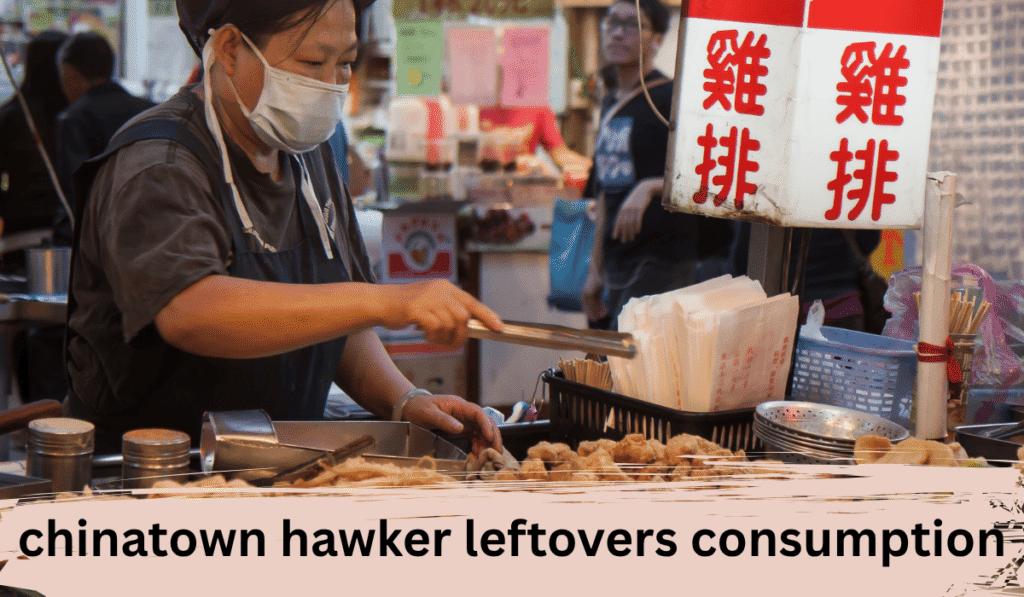Introduction: More Than Just a Bite Left Behind
It’s mid-afternoon in Chinatown. The smell of sizzling woks, chili oil, and sweet soy sauce fills the air. You hear the clatter of utensils and the buzz of lunchtime conversations. But if you look closely, there’s something else that lingers after the crowds leave — half-finished bowls of noodles, bits of char kway teow, untouched sides of dumplings. The Chinatown hawker leftovers consumption issue isn’t just about waste. It taps into deeper questions about culture, economy, and survival.
The Allure and Affordability of Hawker Culture
Hawker Centres: The Beating Heart of Chinatown
For many, hawker centres are more than food courts — they are a daily ritual. These stalls offer an affordable way to experience local flavors, and for elderly residents or migrant workers, they’re a social and economic lifeline. But with high turnover and low prices, portions are generous, often leaving behind significant leftovers.
Who’s Eating What’s Left Behind?
There’s a growing, quiet phenomenon of Chinatown hawker leftovers consumption — not just by necessity but sometimes out of habit or belief that food shouldn’t go to waste. From the elderly collecting half-finished meals to younger folks who rationalize “it still looks untouched,” this practice reveals a spectrum of motivations.
Cultural Perspectives on Waste and Sharing
Respect for Food: A Generational Lens
In many Asian cultures, wasting food is frowned upon. Grandparents who lived through scarcity instilled the belief that “every grain of rice has value.” It’s no surprise then, that some might see leftover food as still usable, even if it’s from a stranger’s table.
Is This Sharing or Surviving?
In some cases, leftover consumption is about survival. For others, it may feel like an unspoken form of food redistribution. But either way, it’s a practice that raises eyebrows and eyebrows — especially when viewed through the lens of hygiene, dignity, and necessity.
Health, Hygiene & the Ethical Crossroads
The Hygiene Dilemma
The line between safe and unsafe isn’t always visible. Food sitting out in the heat, potential contamination, and unknown diners’ health statuses — all these add invisible risks. Yet, these concerns often take a backseat when hunger speaks louder than caution.
Ethical Gray Zones
Should restaurants intervene? Should society judge? When authorities try to discourage the behavior, are they addressing the cause — or just the symptom? The conversation gets more layered when you factor in food insecurity, social stigma, and deeply-rooted beliefs.
Real Voices, Real Choices
| Persona | Viewpoint on Leftover Consumption |
|---|---|
| Auntie Lim, 72 | “In my time, nothing went to waste. I still eat what others leave if it’s clean.” |
| Samir, migrant worker | “Sometimes I can’t afford a full meal. Leftovers help.” |
| Mei, student food blogger | “It’s shocking, but I get it. We waste too much food.” |
| Hawker Stall Owner | “I see it happen. I worry more about their health than anything else.” |
A Conversation Worth Having
Beyond Shame, Toward Solutions
This isn’t about casting blame. It’s about recognizing a pattern and asking why it persists. If food waste is the enemy, and hunger is the driver, maybe the real issue lies somewhere in our systems — not in the people quietly clearing up what others discard.
Could This Be Reimagined?
What if hawker centres offered designated ‘leftover stations’ for untouched portions? Or clearer messaging about safety and dignity in food consumption? Real change starts not with judgment, but with awareness.
Conclusion: What We Leave Behind Tells a Story
Chinatown hawker leftovers consumption is more than a matter of food on a plate. It reflects cultural values, economic realities, and human resilience. It asks us to confront the tension between survival and sanitation, tradition and change. And in that tension, maybe there’s room to build something more compassionate, more understanding — and far less wasteful.
FAQs
Q1: Is leftover consumption in hawker centres common?
It exists more than people openly admit, especially in busy, densely packed areas like Chinatown. While not mainstream, it’s a known and visible phenomenon.
Q2: Why do people eat other people’s leftovers?
Reasons vary: economic hardship, cultural values about waste, or simply hunger. It’s a complex mix of necessity and perspective.
Q3: Is it safe to consume food left by others?
There’s no guaranteed safety. While some might inspect food before eating, risks of contamination and hygiene issues remain high.
Q4: Are there better solutions to food waste in hawker centres?
Yes — from food redistribution programs to community fridges or smaller portions. But awareness and empathy are the first steps.

